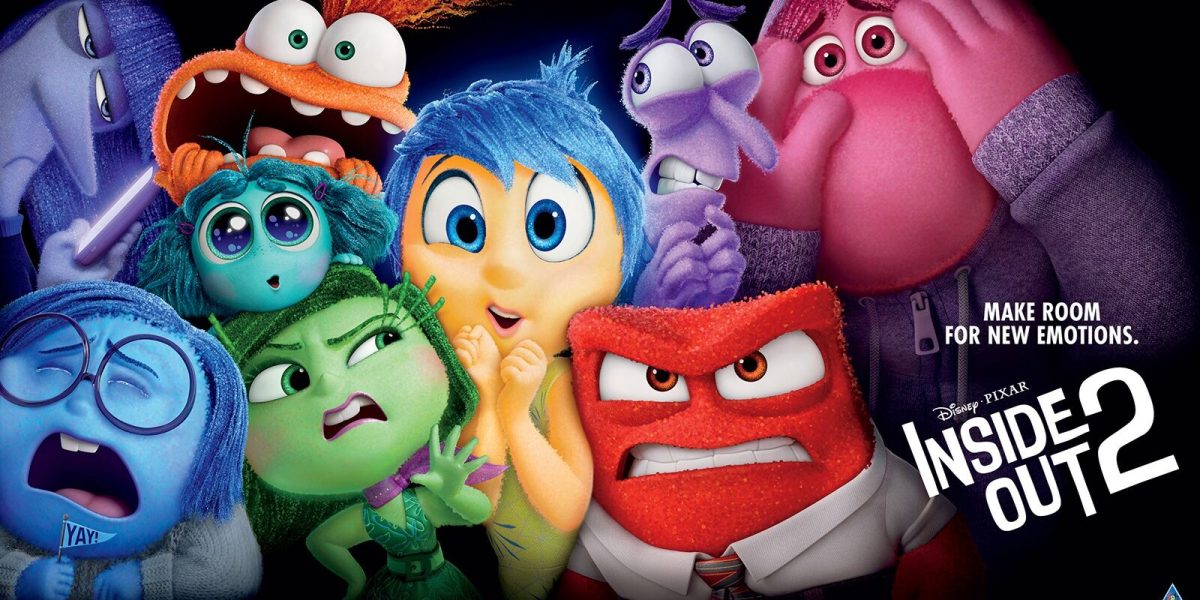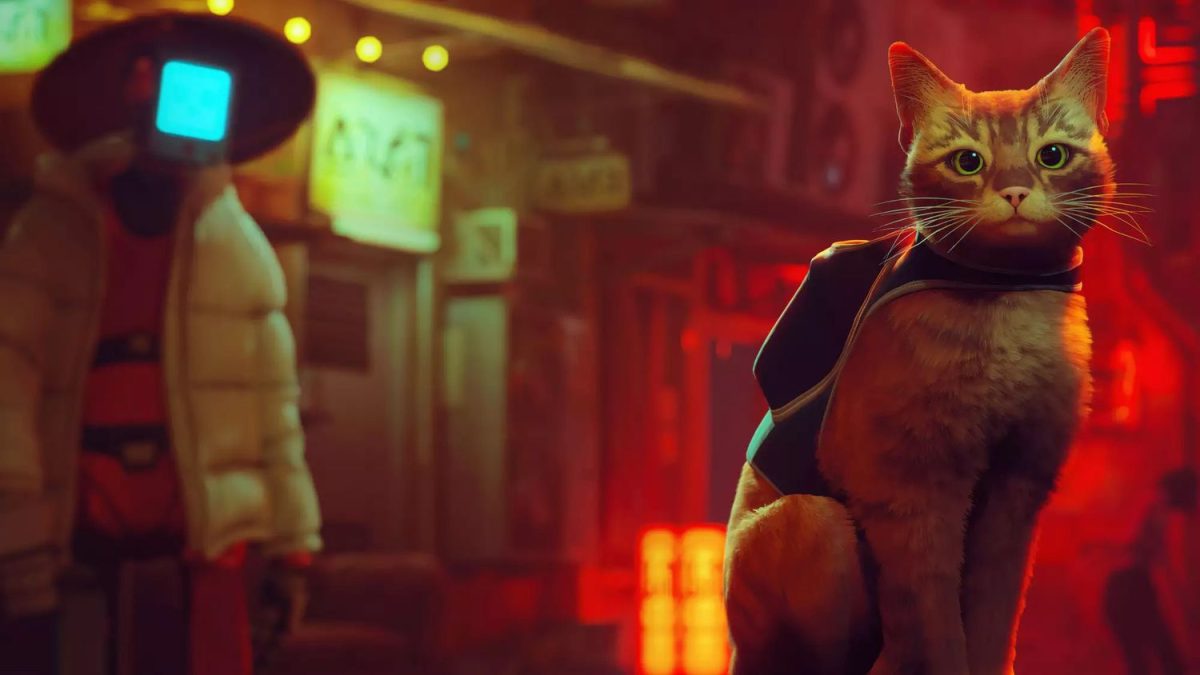The Gorillaz are distinguished for many reasons. They are a virtual band, meaning real people record the songs while cartoons are used for all the media, such as their music videos and posters. This group of misfits, 2D, Russel Hobbs, Murdoc Niccals, and Noodle, have practically fallen off the face of the earth, but after a three-year hiatus, a long awaited comeback is here with the initiation of “Phase 4.” Maybe you know them, maybe not. Perhaps in the deepest realms of your memories, you can remember hearing “Feel Good Inc.” on the radio. Though their resurrection is a hot topic, the point of discussion is their 2010 album, Plastic Beach.
This album includes other ensembles and artists, such as Snoop Dogg (which was his name at the time of the album), the funky Hypnotic Brass Ensemble, and many more. The entire album demonstrated a newfound maturity in the band and gave vibes unlike any other. The album is essentially a public service announcement for pollution, the harms of following society’s every demand, and promotes pacifism. The post-apocalyptic feel to the album lures listeners from beginning to end.
The opener is my favorite. It’s called “Orchestral Intro,” and it’s exactly that. The sinfonia ViVA plays beautifully and paints the images of a beach, white sands and blue skies. The intro goes directly into the next track, “Welcome to the World of the Plastic Beach,” where Hypnotic Brass produces an arpeggiated chord and, at the pinnacle volume, immediately drops to introduce a funky beat (which sounds like the synth Napoleon Dynamite uses) and Snoop Dogg. The rap is illustrating the World of the Plastic Beach, where “the revolution will be televised” and kids think the world is “hopeless.” It definitely doesn’t sound as serious as I just made it out to be, but this song introduces a real world problem.
On to “White Flag,” where the National Orchestra for Arabic Music brings impressive conga technique and a flute melody to float above and disappear into the orchestra, with only high strings playing that lead into the voices and electronic music. Bashy and Kano rap together to talk about the “suffocation when [they] touch the shore,” talking about the gross conditions of the beach. Although the beach is polluted to the point of “breathing in diseases,” it’s a violence-free environment and they meet a peaceful crowd. At the end of the rap, the beginning of the song is repeated with the underlying electronic beat until it fades to silence.
“Rhinestone Eyes” is when Gorillaz make their first real appearance in the album. This song introduces some almighty presence with “plastic power.” The “Rhinestone Eyes” are symbols of “factories far away.” Besides illuminating the power that causes the pollution, there’s a romantic vibe that comes from it. It seems like 2D is in love with the toxic ruler of the Plastic Beach.
One of the singles of the album, “Stylo,” combines 2D, Mos Def, and the not-as-unpleasant rasp of Bobby Womack’s voice. This song is pretty annoying, and maybe it’s because after hearing the whole song through hundreds of times, Bobby Womack becomes the only thing worth listening to. 2D only carries the message through, but Womack’s voice instantly takes over the attention of listeners. The music video comes with the album if you purchase it on iTunes, and that too is annoying but also irrelevant to what the song means.
For “Superfast Jellyfish,” it’s hard to give any meaning to that. It pieces together different breakfast commercials and that’s just weird, I don’t get it. This should be taken out of the album because it doesn’t add meaning to the album.
“Empire Ants” picks up on the romantic aspect of the album again from “Rhinestone Eyes,” except the song focuses on the backlash of pollution and the “world crashing down” because of war and introduces a new idea where the “ants” are everyday people that command their own destruction just by following the fads of society.
“Glitter Freeze” and “Some Kind of Nature” introduce a new funk. “Glitter Freeze” is essentially, an instrumental piece. It’s supposed to introduce a new place that is completely frozen and impossible to navigate through, since Mark E. Smith starts the song with “Where’s North from here?”. There is a single inhabitant here, considering the mad laughter that lies under the repetitive synth melodies. “Some Kind of Nature” creates a picture of an endless landfill, where the inhabitant, Lou Reed, picks up multiple things, such as gold, plastic, and metals.
“On Melancholy Hill” introduces a “plastic tree,” probably the only thing that can resemble a tree that’s left. The hill provides the best view of the world, but also let’s 2D float into a dream of what he wishes the world were. “Broken” talks about the fragmented populations. Everyone’s love is broken, because hope is lost and the “plasma screens” absorb their individuality and potential to want to repair the damage.
“Sweepstakes” uses Hypnotic Brass again, which is why it’s cool. The message it carries, however, particularly attacks the way people feel “safe” when they follow society and everyone’s a winner when, in reality, more people lose than win.
“Plastic Beach” sums up the hopelessness of the beach. The one whale left watches ships go by, and 2D calls it the “day to try”. The landfill pours into the ocean, everything from Casio products to styrofoam is killing what’s left.
“To Binge” is unlike the messages of world issues. Instead, it describes break ups and the horrors of having to face the inconvenient truths and the feelings of being the one to blame for what has happened. “The Cloud of Unknowing” follows the same path. It is the insecurity of not knowing what one feels for another. Towards the end of the song, there’s a revelation where Bobby Womack decides to put himself above all else.
“Pirate Jet” is simply an instrumental, but when I listen to it I think of buoys because it starts with a sound effect that sounds similar to a bell. “Pirates Progress” is an extended version of “Orchestral Intro” and “Three Hearts, Seven Seas, Twelve Moons” is another song by sinfonia ViVA. These are bonus tracks when you buy the album on iTunes, along with the music video to “Stylo” and an iTunes LP, which provides a digital and interactive version of the album. It includes behind the scenes looks at the creation of “Stylo,” artwork, and a jukebox that displays lyrics. It’s pretty awesome.
The album continuously brings listeners into a new place, where cultures of people, if they even are people, live in their own way and how they can live through the pollution. A new message is introduced in each song, ranging from pollution to the constant demands of society. This album gives room for multiple interpretations, but this is my own. Plastic Beach is fun to listen to, and the meanings are hard to find, but don’t think too hard about it, just enjoy.


